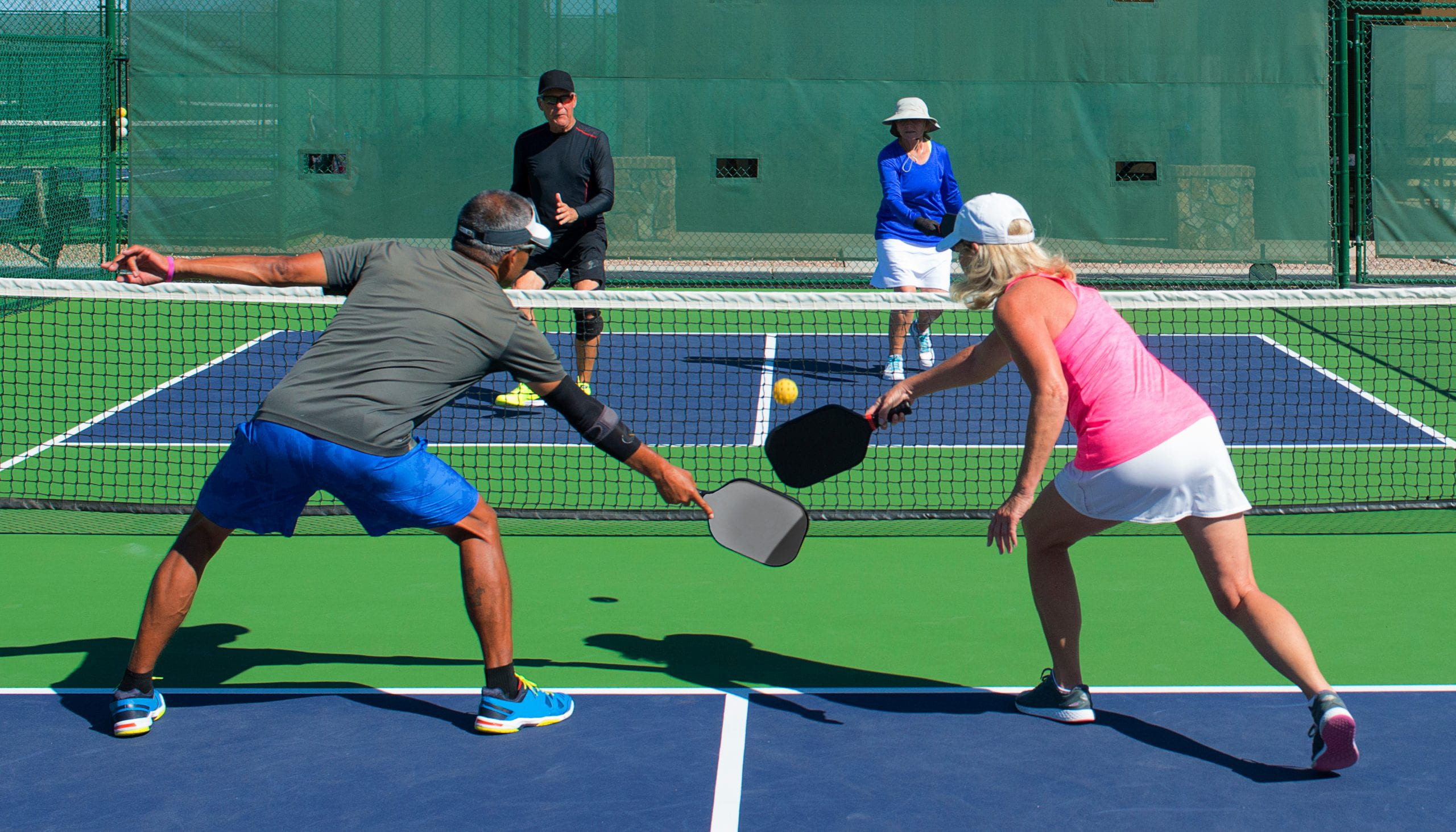Pickleball Injuries More Frequent, Severe Than You Might Think

Findings from a new study by public health researchers at the University of Arkansas suggest that people older than 50 might want to consult a doctor before taking up pickleball, the tennis-like sport that has grown in popularity over the past few years.
In “The Role of Age as a Risk Factor for Pickleball-Related Injuries,” published in the January issue of Health, Ches Jones and Bart Hammig, professors of health, human performance and recreation in the College of Education and Health Professions, reported that 87% of all “pickleball-related” injury incidents that required an emergency-room visit happened to participants older than 50.
Regarded as a family sport, pickleball attracts players from many different demographics, including a wide range of age groups. However, as participation has increased so have injuries. The purpose of the study was to identify risk factors for injury, including how injuries occurred, and to identify effective countermeasures.
The researchers used data from the National Electronic Injury Surveillance System (NEISS), operated by the U.S. Consumer Product Safety Commission. The NEISS collects data from a sampling of 100 U.S. emergency departments. Working with 296 records from U.S. emergency rooms for 2022, the researchers used a weighted variable to project 17,416 emergency room visits that year due to pickleball-related injuries.
The NEISS includes data on age, gender, race and ethnicity, location of incident, injury diagnosis, injury disposition, body part involved, and alcohol or drug use. The age groups studied were 1 to 25, 26 to 50 and 51 to 100, based on several factors, including environment, and age-related predisposition for specific types of injuries.
The most common injury diagnosis was fractures at 30%, followed by sprains at 17% and internal organ injury at 7.2%. One out of five injury cases was admitted for hospitalization. Most of the hospital admissions were for cardiac arrest, with the other 25% admitted for fractures.
The results indicated that the types and mechanisms of injury were specific to the three specific age groups. Injuries to players under the age of 26 were likely the result of misuse of sport equipment. Middle-aged players, those from 26 to 50, sustained injuries related to activity overuse.
The majority of injuries, close to 87%, happened to participants older than 50. This group demonstrated a greater percentage of cardiac arrest or symptoms leading to more severe cardiovascular conditions.
“Pickleball requires short bursts of intense movement,” said Jones.
“These bursts of anaerobic activity among persons who are untrained and susceptible to heart disease may invoke a myocardial infarction or other cardiac events. While pickleball is marketed as a family friendly game, the reality may be that participants are putting themselves at-risk for injury and cardiac events, without the physiological benefits of a more sustained physical activity program.”

